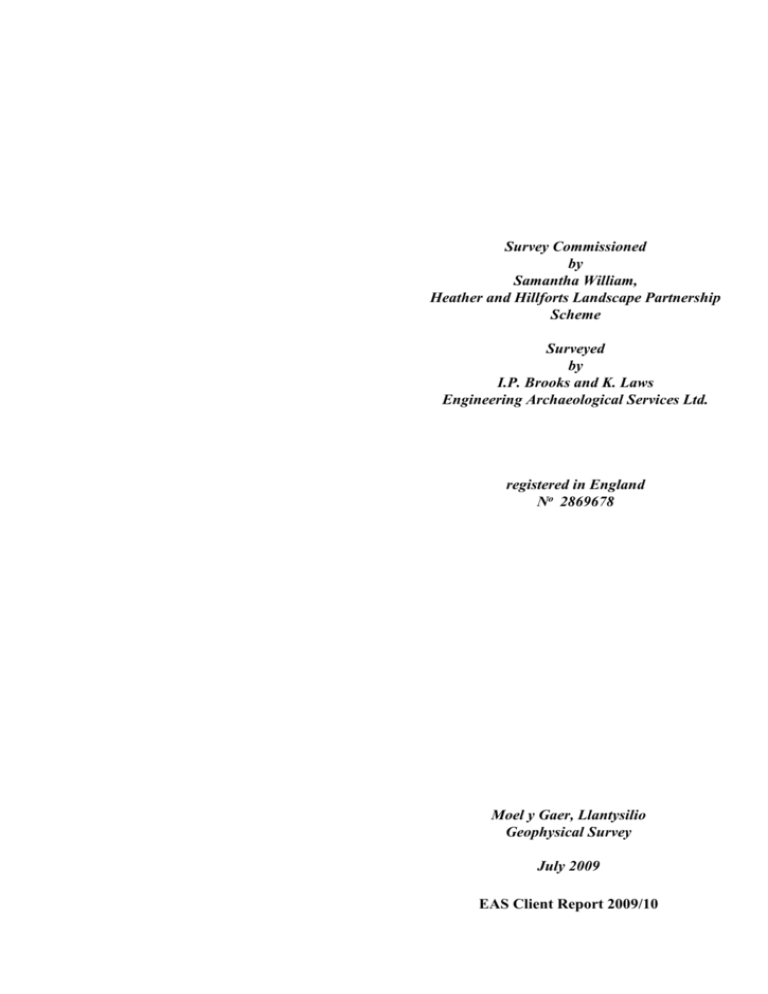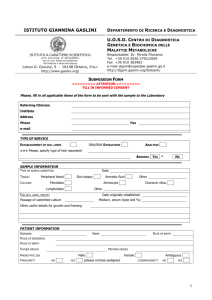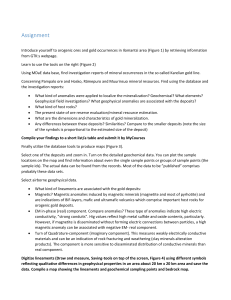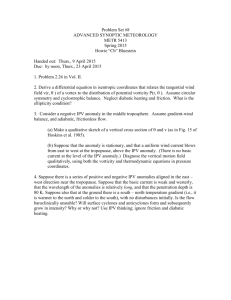
Survey Commissioned
by
Samantha William,
Heather and Hillforts Landscape Partnership
Scheme
Surveyed
by
I.P. Brooks and K. Laws
Engineering Archaeological Services Ltd.
registered in England
No 2869678
Moel y Gaer, Llantysilio
Geophysical Survey
July 2009
EAS Client Report 2009/10
CONTENTS
List of Illustrations
Figure 1: Location
Figure 2: Location of Fluxgate
Gradiometer Survey
Figure 3: Location of the Resistivity
Survey
Figure 4: Fluxgate Gradiometer, Grey
Scale and X-Y Plots
Figure 5: Fluxgate Gradiometer Survey,
Interpretation
Figure 6: Fluxgate Gradiometer Survey
Summary
Figure 7: Resistivity Survey, Grey Scale
and X- Y Plots
Figure 8: Resistivity Survey,
Interpretation
Figure 9: Resistivity Survey, Summary
Figure 10: Summary
Introduction:
NGR
Location and Topography
Archaeological Background
Aims of Survey
SUMMARY
Methodology:
Complicating Factors
Survey Results:
Area
Display
Results
Fluxgate Gradiometer
Magnetic Susceptibility
Resistivity
Plate 1: Fluxgate Gradiometer Survey
Conditions
Conclusions
Technical Information:
Techniques of
Geophysical Survey
Instrumentation
Methodology
Copyright
Acknowledgements
1
NGR
Centred on SJ 16695 46376
Location and Topography (Figure 1)
Moel y Gaer, Llantysilio (SAM De 126), is the
smallest of the hillforts within the Heather and
Hillfort study area (Jones, 2004, 7). It
occupies one of the lower summits of the
Llantysilio Mountain, between Moel y
Gamelin and Moel Morfydd (Figure 1). These
two peaks block the view from Moel y Gaer to
the east and west leaving the best views to the
south towards the River Dee and north over
the valley of the Afon Alyn. It also overlooks
a relatively low pass between the two valleys
at the foot of Moel y Gamelin, now occupied
by the route of the county road. The
underlying geology consists of fissile
mudstones, thinly bedded sandstones and
indurated cleaved siltstones and shales of early
Ludlow, late Silurian age (Dorning pers.
comm.)
The single rampart at Moel y Gaer, Llantysilio
encloses an area of approximately 0.95 ha. It
is most developed on the northern and eastern
sides of the hillfort where an external ditch is
also evident. Elsewhere the defenses would
appear to consist of a single rampart which
enhances the natural slope of the hillside.
Quarry hollows occur only in the north eastern
sector.
Only one gateway is evident, facing east. This
has an inturned corridor, approximately
22.25 m long and 2.25 m wide
Within the hillfort there appear to be the
remains of eleven possible hut platforms.
These tend to concentrate on the more
sheltered eastern side of the hillfort, however
the level of heather and bilberry growth within
the hillfort would allow for other, more subtle
features to exist.
Archaeological Background
No substantial archaeological work has been
documented from the site (Williams, 2004),
although the Clwyd-Powys Archaeological
Trust carried out an Archaeological Condition
Survey (Jones, 2004, 7 - 8) as part of the
initial phase of the Heather and Hillfort
Project. Also, in 2006 Engineering
Archaeological Services Ltd were
commissioned to carry-out a topographic
survey of the hillfort (Brooks and Laws 2007).
Aims of Survey
To gather sufficient information to establish
the location and extent of any archaeological
features within the hillfort and, if possible, to
characterise the archaeology located.
SUMMARY OF RESULTS
Both Fluxgate Gradiometer and Resistivity
survey techniques were attempted within the
hillfort, of which the Fluxgate Gradiometer
survey proved to be most successful.
A number of magnetic anomalies were
recorded suggesting a level of occupation not
previously recorded including the potential of
twenty circular anomalies which may
represent the positions of roundhouses. Two
potential rectilinear structures were also
recorded. Linear areas of relatively slight
magnetic disturbance may represent the
position of track ways within the hillfort. One
of these would appear to have a series of
anomalies along its edge which may be the
positions of pits or large post-holes. The
gateway and ramparts were sampled showing
the ramparts have a distinct magnetic
signature.
The Resistivity Survey appears to largely be a
response to the underlying geology, although
one possible archaeological anomaly was
recognised.
7). Interpretation plots are shown as Figures 5
and 8 and the data is summarised in Figures 6,
9 and 10.
Methods
The Fluxgate Gradiometer survey was
undertaken using parts of twenty-two 20 x
20m grid squares laid out as in Figure 2.
Readings were taken at 0.5 m intervals along
transects 0.5 m apart. These transects were
walked in a parallel pattern.
Results:
Fluxgate Gradiometer Survey (Figure 5)
The grey scale plot of the Fluxgate
Gradiometer survey shows large areas of
magnetic disturbance which are assumed to be
geological in origins and are shown in
magenta on Figure 5. Despite this level of
natural variability within the data the magnetic
regime is relatively quite with one standard
deviation of the readings only varying
between -2.83 and 3.49 nT. This allows for the
discrimination of a number of rather feint
magnetic anomalies.
The survey was carried out using a Geoscan
FM 36 Fluxgate Gradiometer with a hand
trigger. Grey Scale plots were produced using
Geoscan Research “Geoplot” v.3.00e and X Y Plots using Golden Software “Surfer”
v. 5.01.
The Resistivity Survey used three of the same
grid squares as the Fluxgate Gradiometer
survey (Figure 3) using a Geoscan RM15
resistance meter with a MXP15 multiplexer. A
twin probe setting was used with a separation
between the probes of 0.5 m. Readings were
taken at 0.5m intervals along transects 1 m
apart. Grey Scale Plots were produced using
Geoscan Research “Geoplot” v. 3.00e and X Y Plots using Golden Software “Surfer” v.
5.01.
Crossing the plot is a linear anomaly (Figure
5, Anomaly A), approximately 2.5 m wide
which is the magnetic response to the modern
track crossing the site. At the eastern end this
anomaly passes between two areas of
magnetic disturbance (Anomalies B and C).
These anomalies tend to have a line of high
readings (up to 20 nT above the background)
adjacent to the modern track and zones of
lesser magnetic disturbance spreading away
from the track. These anomalies correspond
with the inturned rampart forming the gateway
of the hillfort. A similar level of magnetic
disturbance was also recorded where the
survey area crosses the rampart elsewhere
(Anomalies D and E). There is also an area of
slight magnetic disturbance which can be
related to the area of quarry hollows in the
north eastern sector of the hillfort (Anomaly
F).
Complicating Factors
The use of a hand trigger was partly dictated
by the presence of deep heather and
moderately steep slopes within the survey
area. The heather depth varied, but reached
knee height in places (Plate 1) making the use
of a sample trigger impossible.
The location of the Resistivity Survey was
determined by the distribution of the area
where the heather was shorter.
Survey Results:
Crossing the plot are three linear anomalies
which are marked only by the lack of
variability in the grey scale image. Anomaly G
forms a loop south of the existing track across
the site up to 5.5 m wide. Anomaly H is north
of the track running in a SSW – NNE direction
and is approximately 3 m wide. Anomaly I,
loops from the northern side of the track to
join the northern end of Anomaly H and is up
to 4 m wide. All of these anomalies are shown
Area
The internal area of the hillfort is
approximately 0.95 Ha of which 0.84 Ha was
subjected to Fluxgate Gradiometer survey and
0.12 Ha to Resistivity Survey.
Display
The results are displayed as Grey Scale
Images and as X-Y Trace Plots (Figures 4 and
2
AE – AL) varying in size from approximately
1 to 2.5 m in diameter which appear to
represent a series of features aligned along the
possible trackway (Anomaly I). It is not
certain whether these anomalies represent
possible post holes or pits.
in green on Figure 5. The interpretation of
these anomalies is uncertain, however, their
distribution and form may suggest that they
may be tracks or pathways within the hillfort.
Within the plot are a series of seven, feint,
circular anomalies (Anomalies J – P) of a size
and form to suggest that they may represent
the site of round houses within the hillfort.
There are also fourteen further possible
circular anomalies (Anomalies Q – AD) which
may also be the sites of possible round houses;
however, the anomalies are even feinter on the
grey scale plots. Some, but not all of the
circular anomalies can be related to
topographical features assumed to be house
platforms in the previous topographical survey
(Brooks and Laws 207). The diameter of these
anomalies is detailed below.
Anomaly
Diameter (m)
J
K
L
M
N
O
P
Q
R
S
T
U
V
W
X
Y
Z
AA
AB
AC
AD
9.57
7.08
7.46
7.46
10.61
7.25
8.15
10.85
9.50
9.65
10.25
8.78
8.36
10.05
10.76
8.31
7.72
8.22
8.61
8.69
7.62
Almost centrally placed within the hillfort are
two possible rectilinear anomalies. The
clearest of these is Anomaly AM which is
marked by a series of discrete anomalies
forming a right angle at its south eastern end
and an area of low variability within the grey
scale plot. This forms an area of
approximately 18.5 m x 8.6 m in size.
Anomaly AN is much feinter, but appears to
define a rectilinear area approximately 12.1 x
5.8 m in size. It is assumed that both of these
anomalies may represent the positions of
rectangular buildings within the hillfort.
There are also four feint linear anomalies
(Anomalies AO – AR) which generally do not
appear to form any coherent pattern. The only
exception is AR which appears to be related to
Anomalies AK and AL, joining these two
anomalies.
Magnetic Susceptibility
Given the nature of the site it was considered
inappropriate to take soil samples in order to
assess the magnetic susceptibility of the soils.
The relative quiet nature of the magnetic
regime and the possibility to discriminate feint
anomalies would suggest that the conditions
were reasonably good for magnetic survey.
Resistivity Survey (Figure 8)
The Resistivity survey was restricted to the
areas of the hillfort where the heather
coverage was at its lowest. The majority of the
anomalies located would appear to relate to
the underlying geology, although some of the
anomalies may relate to possible
archaeological features.
The distribution of these circular anomalies
would suggest that they cannot all be
contemporary as they intersect with each other
and other anomalies on the plot.
Anomalies 1 and 2 (Figure 8) are areas of high
resistance within an area of slightly enhanced
resistance (Anomaly 3) which are assumed to
be geological in origins. Anomalies 4 and 5
Apparently aligned along Anomaly I are a
series of eight discrete anomalies (Anomalies
3
Conclusions
may also be geological in origins, however,
they also roughly correspond with two of the
house platforms recorded in the topographic
survey and may therefore relate to a spread of
material from the destruction of these features.
It is a fundamental axiom of archaeological
geophysics that the absence of features in the
survey data does not mean that there is no
archaeology present in the survey area only
that the techniques used have not detected it.
Anomalies 6 and 7 are adjacent to or on the
rampart of the hillfort and therefore relate to
this feature. They sit, however, within a zone
of slightly enhance resistance (Anomaly 8)
which is assumed to be geological in origins.
The Fluxgate Gradiometer survey of Moel y
Gaer Llantysilio proved to be particularly
successful in locating a series of previously
unknown possible archaeological features and
suggesting a level of occupation which was
previously unexpected. The success of this
survey is partly because of the level of
resolution with which the survey was
undertaken. It is suggested that a minimum
resolution of 0.5 m samples along transects
0.5 m apart is required in order to map the
possible feint magnetic anomalies within the
hillforts of the project.
Anomaly 9 is a zone of enhanced resistance
which appears to have a distinct shape
including a circular anomaly at its eastern end.
This anomaly partly corresponds with a
possible house platform recorded in the
topographic survey to which it may relate.
Only two low resistance anomalies have been
located. Anomaly 10 is a slightly irregular
area which appears to approximately relate to
a possible round house recorded in both the
topographic and Fluxgate Gradiometer
surveys. If so it may be that the floor of the
possible house is acting as a barrier to the
local drainage. Anomaly 11 has no obvious
origins and may therefore be geological in
origins.
In all twenty possible roundhouses have been
located of which only eight appear to have any
physical remains visible as topographic
feature. Three other possible house platforms
could not be related to magnetic anomalies. It
is clear that not all these anomalies are
contemporary as they intersect with each other
and other anomalies within the plot.
It is possible that there were internal divisions
within the hillfort marked by possible tracks.
The date of these features is uncertain as they
are cut by possible round houses and one of
the possible rectilinear structures. It is possible
that the routes relate to one of the Iron Age
phases within this developing site, although
the correspondence between the alignment of
the possible rectangular building (Anomaly
AM and the possible track (Anomaly I) may
suggest a later date for the tracks. It is clear
that one of these possible tracks (Anomaly I)
has a series of features aligned along it which
may be a series of pits or large post holes.
Of particular interest are the two rectilinear
anomalies which are assumed to be the sites of
rectilinear buildings. Buildings of this size and
shape are unlikely to be Iron Age in date and
may represent the re-occupation of the site in
the post-Roman Early Medieval period. A few
4
hillforts in Wales show evidence of
occupation in the Early Medieval period such
as Dinas Emrys in Caernarfonsire in the fifth
to seventh centuries AD and Degannwy
Denbighshire) and Hen Gastell
(Glamorganshire) in the ninth and tenth
centuries AD (Arnold and Davies 2000, 159 –
162) and it is possible that Moel y Gaer
Llantysilio is comparable with one of these.
Acknowledgements
The survey was commissioned by Samantha
William for the Heather and Hillforts
Landscape Partnership Scheme. She also
organized transport up to the base of the hill
and indeed drove the four by four for many of
the days. Thanks are also due to the other
members of Countryside Services who also
drove the vehicle.
References
Arnold, C.J and Davies, J.L 2000. Roman and
Early Medieval Wales. Sutton
Publishing Ltd. Thrupp,
Gloucestershire.
Brooks, I.P. and Laws, K. 2007. Heather and
hillforts survey report: Moel y Gaer
Llantysilio. EAS Client Report
2007/01
Burnham, H. 1995. A guide to ancient and
historic Wales. Clwyd and Powys.
HMSO, London
Jones, N. 2004. Heather and hillforts
archaeological conditions survey.
Clwyd-Powys Archaeological Trust
Report 658.
Williams, S, 2004 Heather and Hillforts
Landscape Partnership. Desktop study
of the hillforts. Unpublished report by
Denbighshire Countryside Services
5
Techniques of Geophysical Survey:
Instrumentation:
Magnetometry:
1. Fluxgate Gradiometer - Geoscan FM36
This relies on variations in soil magnetic
susceptibility and magnetic remenance which
often result from past human activities. Using
a Fluxgate Gradiometer these variations can
be mapped, or a rapid evaluation of
archaeological potential can be made by
scanning.
2. Resistance Meter - Geoscan RM4/DL10
3. Magnetic Susceptibility Meter - Bartington
MS2
4. Geopulse Imager 25 - Campus
Methodology:
Resistivity:
For Gradiometer and Resistivity Survey 20m x
20m or 30m x 30m grids are laid out over the
survey area. Gradiometer readings are logged
at either 0.5m or 1m intervals along traverses
1m apart. Resistance meter readings are
logged at 1m intervals. Data is down-loaded to
a laptop computer in the field for initial
configuration and analysis. Final analysis is
carried out back at base.
This relies on variations in the electrical
conductivity of the soil and subsoil which in
general is related to soil moisture levels. As
such, results can be seasonally dependant.
Slower than Magnetometry this technique is
best suited to locating positive features such as
buried walls that give rise to high resistance
anomalies.
For scanning transects are laid out at 10m
intervals. Any anomalies noticed are where
possible traced and recorded on the location
plan.
Resistance Tomography
Builds up a vertical profile or pseudosection
through deposits by taking resistivity readings
along a transect using a range of different
probe spacings
For Magnetic Susceptibility survey a large
grid is laid out and readings logged at 20m
intervals along traverses 20m apart, data is
again configured and analysed on a laptop
computer.
Magnetic Susceptibility:
Variations in soil magnetic susceptibility
occur naturally but can be greatly enhanced by
human activity. Information on the
enhancement of magnetic susceptibility can be
used to ascertain the suitability of a site for
magnetic survey and for targeting areas of
potential archaeological activity when
extensive sites need to be investigated. Very
large areas can be rapidly evaluated and
specific areas identified for detailed survey by
gradiometer.
Copyright:
EAS Ltd shall retain full copyright of any
commissioned reports, tender documents or
other project documentation, under the
Copyrights, Designs and Patents Act 1988
with all rights reserved: excepting that it
hereby provides an exclusive licence to the
client for the use of such documents by the
client in all matters directly relating to the
project as described in the Project
Specification
6
Plate 1: Fluxgate Gradiometer Survey Conditions
7





